If you’re looking for a unique and easy plant to care for, look no further than the Baby Toes plant. This succulent gets its name from its small, round leaves that resemble Baby Toes. Baby Toes plants can be found in various colors, including green, purple, pink, and red. Baby Toes plants are best suited for growing in pots or other containers since they don’t need much space.
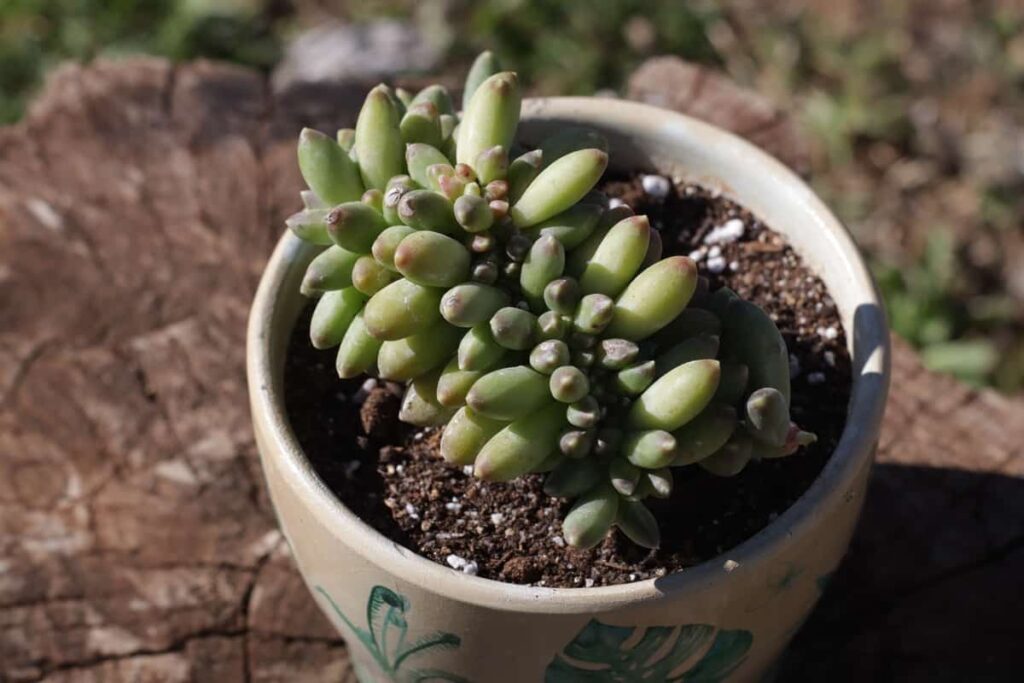
The plant is drought-tolerant and can grow 3 to 6 inches tall. Baby Toes plants are known for purifying the air and improving indoor air quality. They also help to reduce stress levels and promote relaxation.
How to grow and care for baby toes succulent
Climate suitable for growing Baby Toes succulent
When it comes to growing Baby Toes plants, the climate is the essential factor to consider. These plants thrive in warm, humid environments where they can receive plenty of moisture. If you have a cooler climate, you may need to take measures to provide extra warmth and humidity for your plants.
Baby Toes plants are native to tropical regions and are used to warm weather and high moisture levels. This succulent is tolerant of high temperatures and can even survive in some drought conditions. To prevent root rot, let the soil dry completely between watering. In terms of sunlight, these plants require bright, indirect light but can also tolerate some direct sun exposure.
If your plant starts to stretch or etiolate (grow leggy), it’s likely not getting enough light. Be sure to give your Baby Toes plant plenty of space to grow as well, as it can reach up to 6 inches in diameter when mature. You can enjoy this unique and easy-to-care-for plant for years with proper care.
In case you missed it: Types of Succulents in India – Indoor Succulents Perfect for Indian Climate
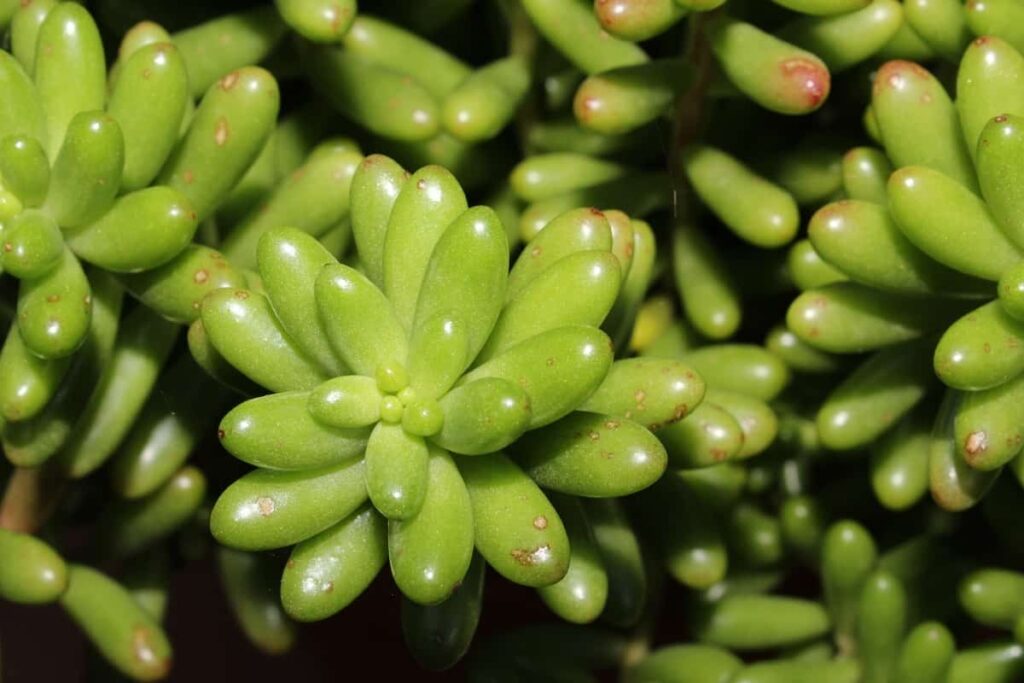
Water requirement for growing Baby Toes succulent
When watering Baby Toes plants, there are a few things to remember. First, these plants like their soil to be moist but not soggy. This means you should water them regularly, but not so much that the soil is constantly wet. Second, Baby Toes plants are native to hot, dry climates. As such, they’re used to periods of drought followed by heavy rains. Baby Toes plants need consistent moisture to stay healthy and happy.
Soil requirement for growing Baby Toes succulent
To grow Baby Toes plants, you will need a well-draining soil mix. You can prepare your own by mixing equal parts of potting soil, perlite, and sand. Or you can purchase a cactus and succulent potting mix. The ideal soil for Baby Toes plants would be loose, well-draining, and rich in organic matter. A sandy loam or sandy clay loam soil would be a good choice.
These soils have a high percentage of sand, allowing for good drainage while retaining some moisture. The organic matter will provide nutrients for the plants. If you cannot find loose, well-draining soil rich in organic matter, you can amend your existing soil to make it more suitable for Baby Toes plants. Add sand to heavy soils to improve drainage. Add organic matter to light soils to improve fertility and moisture retention.
In case you missed it: How to Grow Hens and Chicks Succulent Plant: Propagation, Plant Care, and Varieties
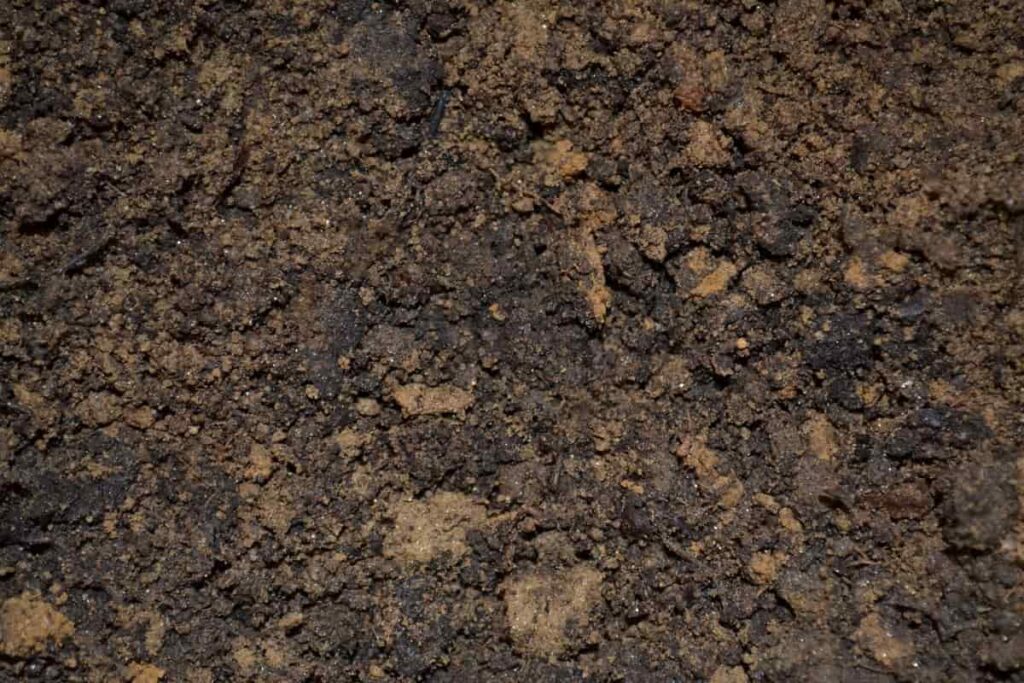
Pot size for growing Baby Toes succulent
The Baby Toes plant is famous for indoor and outdoor gardens because it is easy to care for and can tolerate drought. Choose a container larger than the plant’s root ball when potting the Baby Toes plant. For growing Baby Toes, a 4-inch pot is enough. The Baby Toes plant has a shallow root system, so it does not need a deep pot. Be sure to use well-draining soil, as the plant does not like to be waterlogged. Water the plant sparingly, only when the soil is dry. The Baby Toes plant is tolerant of neglect, so you don’t need to worry about fertilizer or pruning.
Baby Toes succulent propagation
From cuttings
Start by snipping off a 4 to 6-inch cutting from a mature plant to propagate in soil. Dip the bottom of the stem into some rooting hormone powder or gel. Then, plant the stem in a pot filled with a well-draining potting mix. Water lightly and place in a bright, warm location from direct sunlight. Keep an eye on the soil moisture level and water.
From offsets
The offsets, or baby plants, typically form clusters around the base of the parent plant. To propagate, carefully remove an offset from the cluster, including a small portion of the root system. Plant the offset in its pot filled with fresh potting mix and water well. Maintain the soil moisture levels, and place the pot in a bright spot. In 4 to 6 weeks, you may see new growth emerging from the offset. Once established, care for your propagated plant as a normal Baby Toes plant.
Baby Toes succulent care
Fertilizer requirement for growing Baby Toes
To grow Baby Toes plants, you’ll need a high phosphorus fertilizer. Phosphorus is essential for root development, so look for a fertilizer with a high second number in the NPK ratio. Any good quality phosphorus-rich fertilizer will do if you can’t find one specifically labeled for Baby Toes plants. According to the package directions, apply the fertilizer. Fertilizer is an essential part of growing healthy Baby Toes plants.
In case you missed it: Succulent Questions And Answers – Planting FAQs

Many different types of fertilizer are available, so choosing the right one for your plants is essential. A good fertilizer for Baby Toes plants will also contain trace elements such as iron, manganese, and zinc. Granular fertilizers are easier to apply than liquid fertilizers and last longer. Around the base of the plant, apply the fertilizer, taking care not to get any on the leaves or flowers. Water the plant well after applying the fertilizer.
Baby Toes succulent care in winter
When the weather outside is frightful, Baby Toes plants need a little extra care to stay healthy. If you have Baby Toes in pots, bring them inside before the first frost. Please place them near a window and water them as needed. Suppose your Baby Toes are planted in the ground, mulch around them with straw or leaves to insulate the roots. Baby Toes plants need to be watered regularly, even during the winter.
Pruning Baby Toes plant
- To prune your Baby Toes plant, trim any dead or dying leaves. Remember always to use sharp, clean shears when pruning your plant. Use sterile pruning shears to avoid damaging the plant. Cut off any dead or diseased leaves or stems. Trim back any long or straggly stems to promote new growth.
- If you want your Baby Toes plant to thrive, it’s essential to deadhead it regularly. Deadheading encourages new growth and keeps the plant looking its best. To deadhead a Baby Toes plant, snip off the old blooms at the base of the stem. You can also remove any yellow or brown leaves that may be present. Be sure to use sharp gardening shears or scissors, so you don’t damage the plant.
- It’s best to deadhead Baby Toes plants in the morning so they have a full day to recover from the stress of having their blooms cut off. If you do it in the evening, there’s a chance that night-time temperatures could damage the plant. When deadheading, always cut back to a healthy leaf or bud so that new growth has something to emerge from.
In case you missed it: Growing Succulents from Seeds – A Full Guide
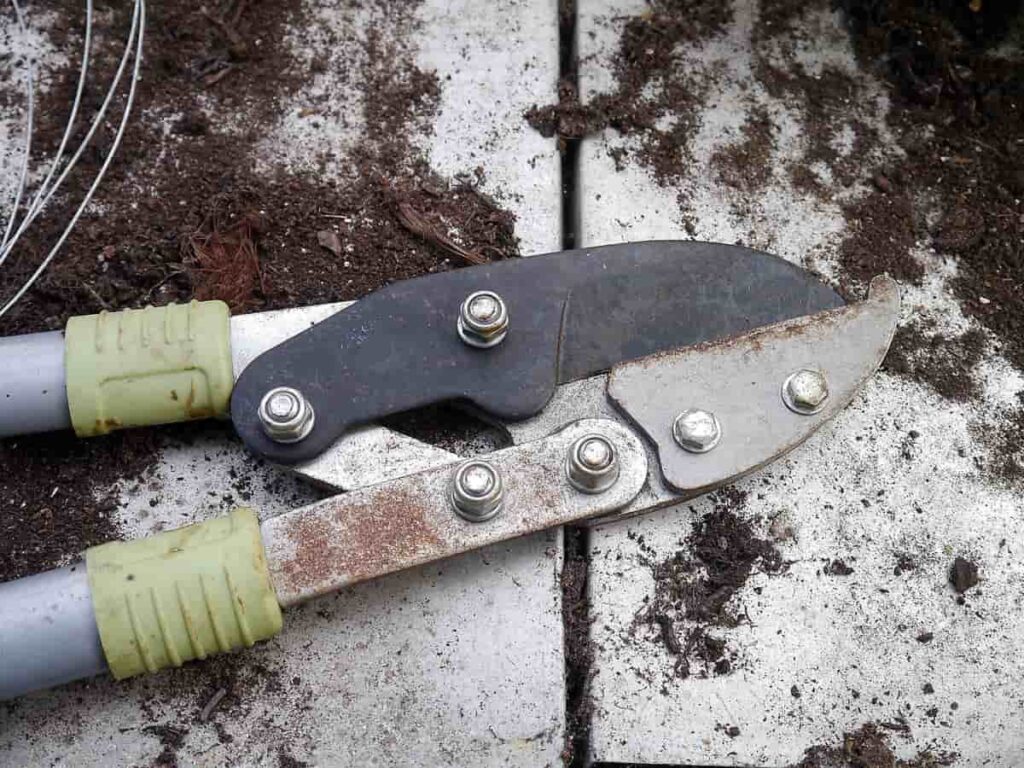
Repotting Baby Toes succulent
When your Baby Toes plant outgrows its pot, it’s time to repot it. Choose a pot that is larger than the current one and has drainage holes. Fill the bottom of the pot with gravel, then add fresh potting mix. Be careful when removing the plant from its current pot. Before placing it in the new pot, loosen the roots. Fill around the plant with more potting mix and water well, then place it in a bright spot.
Pests and diseases of Baby Toes and their control
- Pests and diseases of Baby Toes are generally not a problem. However, if your plants are stressed, they can be more susceptible to pests and diseases. Several diseases can affect Baby Toes plants, and it is essential to be aware of them to take proper care of your plant. One common disease is powdery mildew, which manifests as white or grayish powder on the plant’s leaves. This disease can be controlled with a fungicide.
- Another common disease is root rot, which can kill the plant if left untreated. Root rot can be controlled by improving drainage and ventilation around the plant. The most common pest of Baby Toes is the mealybug. Mealybugs are tiny insects that suck the sap out of plants. They can cause stunted growth, leaf drop, and yellowing of leaves. To control mealybugs, wash them off with soapy water or use insecticidal soap. You may use an insecticide if you have a severe infestation.
In case you missed it: 10 Best Succulents For Indoors
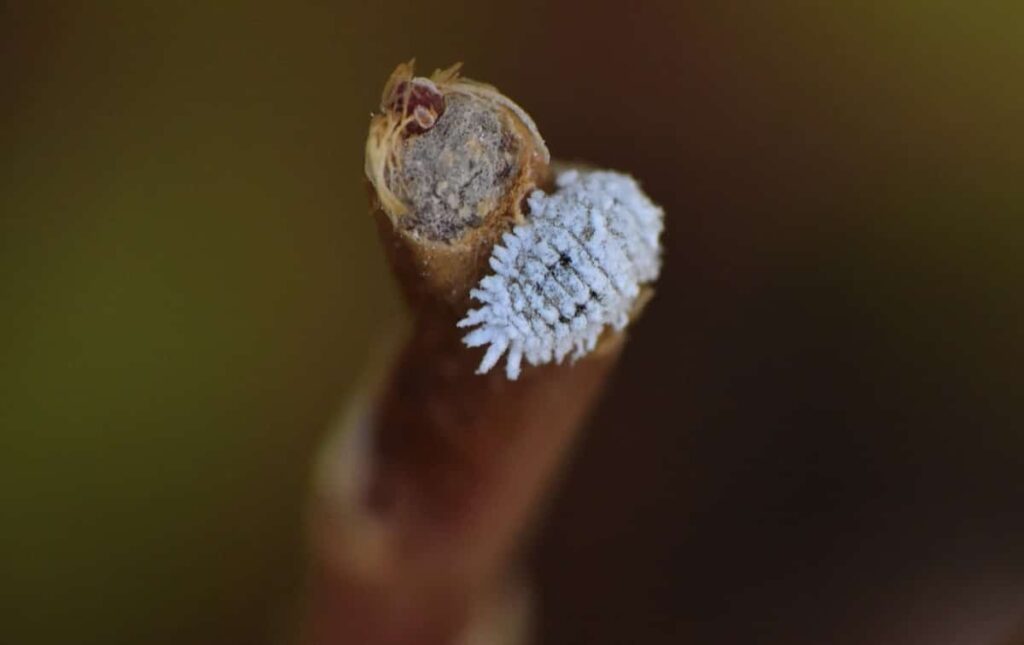
Baby Toes succulent growing problems
Dropped leaves of Baby Toes succulent
- If the leaves of your Baby Toes succulent are dropping off, it is likely due to one of several reasons. Succulents are drought-tolerant plants, so they require little water to survive. However, if the soil is too dry, the leaves will start to drop off.
- If the leaves turn yellow or brown and fall off, it is likely because the plant is getting too much sun exposure. Move the plant to a location with filtered light or indirect sunlight.
- Finally, Baby Toes succulents can also drop their leaves if they are stressed from being moved or transplanted. If you have recently transplanted your succulent, give it a few weeks to adjust new environment before watering it.
Baby Toes succulent cracking
- The common reason is that the plant is not getting sufficient water. Cracks can also form if the plant gets too much direct sunlight. If you think either of these might be the problem, try adjusting your watering and light levels accordingly.
- Another possibility is that the soil you’re using is too dense and isn’t allowing the roots to breathe. Try repotting your Baby Toes in a lighter potting mix if this is the case.
- Finally, if none of these solutions work, your plant may have a disease or pest problem. If you suspect this, take a closer look at the leaves and stems for signs of pests or disease and contact a professional if necessary.
Dry and crispy leaves of Baby Toes succulent
One of the most common problems with Baby Toes plants is that their leaves can become dry and crispy. This usually happens when the plant is not getting enough water, but it can also be a sign of over-watering. Check the soil condition if your plant’s leaves look dry and crispy. You must water your plant more often if the soil is too dry. If the soil is too wet, you must use drainage and reduce watering.
Conclusion
If you want a fun and easy plant to grow, look no further than the Baby Toes plant. With its distinctive shape and simple care requirements, the Baby Toes plant is best if you want to add a little bit of life to your home without putting in too much effort. Despite their delicate appearance, Baby Toes plants are tough and can tolerate various conditions. They’re perfect for beginner gardeners or anyone who doesn’t have a lot of time to dedicate to plant care.
- How to Grow Hibiscus from Flower
- Plantation Ideas for Home Decoration: A Beginners Guide
- Flower Garden Designs and Layouts for Beginners
- Planting and Spacing Techniques in Papaya: A Beginner’s Guide
- Growing Gold: Essential Techniques for Planting Pineapples
- How to Make Kalanchoe Plant Bushy: Home Remedies and Solutions
- 11 Reasons Why Your Gardenia is Not Blooming: Home Remedies and Solutions
- Eco Elegance: The Guide to Designing a Drought-Tolerant Landscape
- Gardening on a Slope: Strategies for Hillside Landscaping
- Nourish and Flourish: Top Organic Mulches for Thriving House Plants
- Everything You Want to Know about Indian Mogra Flower: Discover Uses and Growing
- Green Thumb Success: Expert Tips for Cultivating Greenhouse Pumpkins All Year Round
- Maximize Growth & Flavor: The Ultimate Guide to Companion Planting in Herb Gardens
- How to Control Rhododendron Problems Naturally: Home Remedies and Organic Ways to Fix Them
- Natural Magic: The Remarkable Benefits of Cinnamon for Plants
- Best Steps to Revive Dying Tulip with Natural and Organic Treatment
- 10 Reasons Why Your Angel Trumpet is Not Blooming: Remedies and Treatment
- How to Fix Periwinkle Leaf and Flower-Related Problems: Natural Remedies and Solutions
- How to Fix Zinnias Leaf and Flower Problems: Discover Natural and Home Remedies
- Organic Steps to Induce Lemon Tree Flowers: A Comprehensive Guide
- Bloom Booster: Crafting the Perfect Homemade Bougainvillea Fertilizer
- Optimizing Growth: A Guide to Applying NPK Fertilizer for Potted Plants
- 10 Best Homemade Fertilizers for Rubber Plant: DIY Recipes and Application Method
- How to Boost Female Pumpkin Flowers: Effective Steps for More Flowers and High Yields
- Transform Your Indoor Garden: Top Benefits of Pink Salt for Houseplants
- 10 Best Homemade Fertilizers for Peacock Plants (Calathea): Easy DIY Guide
- Unlock Blooms: 9 Reasons Why Your Potted Chrysanthemum is Not Blooming
- 8 Reasons Why Your Potted Hibiscus is Not Blooming: Fix it with Simple Solutions
- Unlock Blooms: 9 Key Reasons Your Potted Frangipani Won’t Flower
- 10 Reasons Why Is My Ice Plant Not Blooming: Remedies and Treatment
- 10 Reasons Why My Potted Hydrangea Not Blooming: Treatment and Remedies
- 10 Reasons Why is My Wisteria Not Blooming: Remedies and Treatment
- 10 Reasons Why is My Goldfish Plant Not Blooming: Remedies and Treatment
- Maximize Your Space: Ultimate Guide to Balcony Gardening with Grow Bags
- 10 Reasons Why Your Iris is Not Blooming: Remedies and Treatment
- 10 Reasons Why Your Anthurium Plant is Not Blooming: Treatment and Remedies